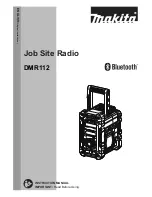
7
How
Y
our
W
eat
heradio
W
ork
s
How
Y
our
W
eat
heradio
W
ork
s
HOW YOUR
WEATHERADIO WORKS
Traditional weather radios simply receive the
National Oceanic and Atmospheric Administration
(NOAA) weather broadcast (usually within a 50-mile
radius), then sound an alarm if any emergency code
was transmitted along with the broadcast. This
means that people who live near an affected area
are often alerted, even when their own area is
unaffected. Eventually, these excess warnings
could cause someone to ignore a potentially life-
saving weather warning.
In 1994, NOAA began broadcasting coded signals
called SAME (Specific Area Message Encoding)
codes along with their standard weather
broadcasts. These codes identify the type of
emergency and the specific geographic area (such
as a county or parish and one or more separate
areas within a county called a subcounty) affected
by the emergency. Your Weatheradio receives,
interprets, and displays information about the codes
so you can determine if the emergency might affect
your area. Only SAME-compatible weather
radios (such as this one) are able to take
advantage of this technology. Each SAME alert
includes a FIPS (Federal Information Processing
System) code that identifies a specific geographic
area (defined by the National Weather Service).
Your Weatheradio can be programmed to sound an
alert only when a weather emergency is declared in
that area. This helps you more efficiently track the
weather conditions in and around your area.
Your Weatheradio displays weather alert
information in the following ways.
Type of
Alert
Indicator
Recommended Action
Warning
Red
Take shelter/take immediate action
to protect life and property from
the described weather condition.
CAUTION
The National Weather
Service (NWS) uses
sophisticated models to
determine an alert’s
effective time; however, the
end of an alert does not
necessarily mean that the
related weather emergency
is over.
12-258.fm Page 7 Tuesday, March 18, 2003 2:47 PM








































